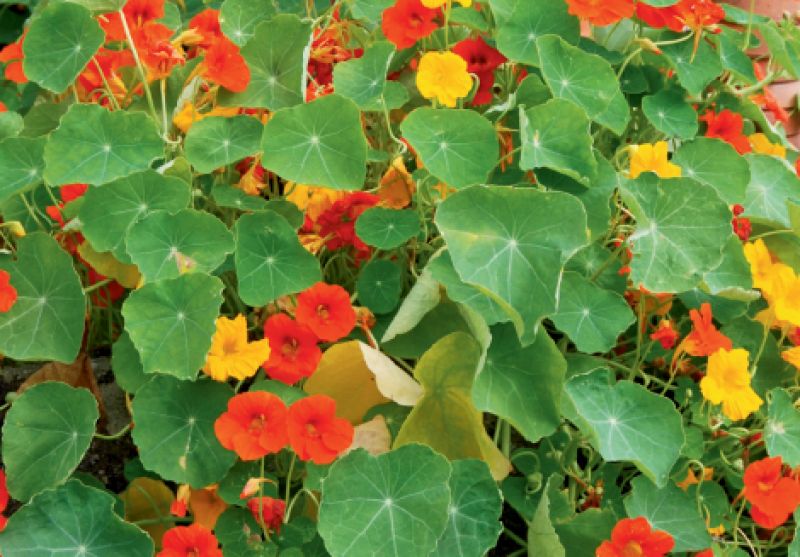
Beautiful and versatile nasturtiums (Tropaeolum majus) are easy to love: these cool-hardy annuals are virtually care-free, come in many varieties, and are edible from leaves to seed. And February’s the perfect time to plant seeds for fiery color in the garden and a peppery bite in salads (as long as you grow them pesticide-free) this spring. You can even pickle the immature seeds and use as a substitute for capers.
Ornamentally, these flowering plants hold court with their cascading stems and brilliantly colored blooms that range from soft, pale yellows to rich reds. If you need a beautiful climber for a trellis, try ‘Moonlight’. For containers that need trailers, get the heirloom ‘Trailing Single Blend’. The showy variegated foliage of ‘Alaska’ is a good bet to brighten a window box. An added bonus? Nasturtium can distract and deter pests, such as aphids, white flies, and cabbage loopers.
Light: Nasturtiums prefer full sun
Water: If planted in the ground, water weekly; if in a container, water more frequently. They do not like dry conditions.
Soil: Loamy well-draining soil. If you use rich soil or fertilize frequently, your plants will be big on leaves and short on blooms.
PLANTING FROM SEED
When: If you live in downtown Charleston’s unique microclimate, directly sow your nasturtium seeds in mid-February. If you live just outside the city, move your sowing date toward the end of the month. For locales closer to the airport where temps are cooler, sow indoors in peat pots (nasturtiums prefer not to be transplanted) to get a jump start on the growing season, or push the direct seeding date back three weeks.
How: Soak seeds in water 12 to 24 hours before sowing. Nasturtiums need darkness to germinate, so plant at depth of at least one-half inch. Space the seeds 12 inches apart, and your seedlings will emerge in about 10 days.